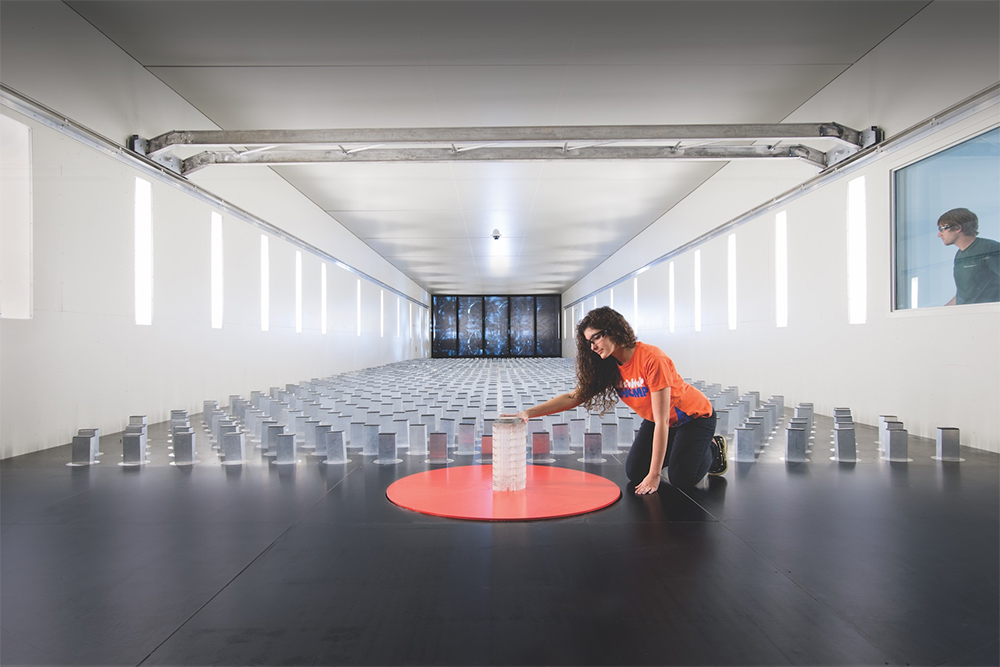EAGER Award to Study Complex Topology and Wind
Published on August 25, 2018

Boundary Layer Wind Tunnel with test specimen and terraformer array.
Motivated by the extensive damage to Puerto Rico caused by Hurricane Maria's landfall in September 2017, researchers who recently received an EArly-concept Grant for Exploratory Research (EAGER) will study how complex topography can accelerate wind and, ultimately, exacerbate damage to buildings and other constructed civil infrastructure. The PI is Forrest Masters of the University of Florida; the co-PI is Luis Aponte of the University of Puerto Rico.
The research will utilize recent advancements in machine learning and weather forecasting to predict wind speed-up in mountainous terrain and other complex terrestrial environments. The project will leverage the NSF-supported Natural Hazards Engineering Research Infrastructure (NHERI) Terraformer Boundary Layer Wind Tunnel (BLWT) at the University of Florida to characterize the surface wind field over geometrically scaled models of Puerto Rico and the municipal Islands of Vieques and Culebra.
This EAGER is a collaboration between the University of Florida (which serves the most hurricane prone state in the US) and the University of Puerto Rico at Mayaguez (a Hispanic-serving institution still recovering from Hurricane Maria), and graduate and undergraduate students from both institutions will be actively involved in the experimental and computational work. Anticipated project outcomes will include important new insights about the influence of topography on the behavior of damaging winds, new scientific tools that fuse experimentation with advanced computing methods to study extreme wind effects on constructed civil infrastructure, and benchmark datasets that will be made available to other researchers in the NHERI Data Depot.

Forrest Masters, PI
University of Florida

Luis Aponte, Co-PI
University of Puerto Rico







